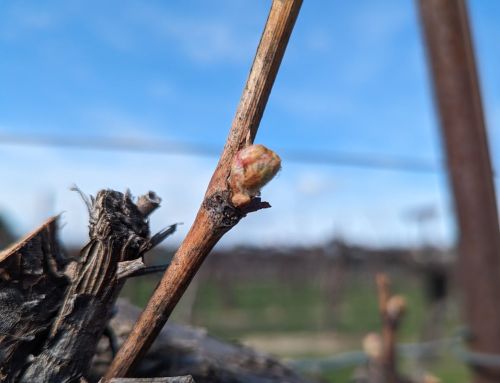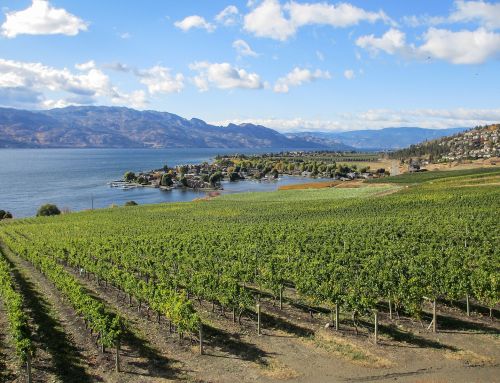 In a meeting last month with its growers, Ste. Michelle Wine Estates (SMWE), the Northwest’s largest winery, informed growers that the company would be substantially reducing its fruit contracts. Specifically, SMWE plans to reduce its total anticipated grape supply by 40% over the next five years. SMWE has already begun negotiating with individual growers regarding contracts that it no longer wishes to continue.
In a meeting last month with its growers, Ste. Michelle Wine Estates (SMWE), the Northwest’s largest winery, informed growers that the company would be substantially reducing its fruit contracts. Specifically, SMWE plans to reduce its total anticipated grape supply by 40% over the next five years. SMWE has already begun negotiating with individual growers regarding contracts that it no longer wishes to continue.
“We are starting conversations with our grower partners in eastern Washington to adjust our grape supply to better align with demand and enable us to focus on crafting the highest quality premium wines from Washington,” Lynda Eller, senior director of communications and corporate affairs at SMWE, said in an email. “Our long-term relationships with our growers are extremely important to us, and while this is a difficult process, these measures are necessary for the ongoing health of our business as well as the health of the overall Washington wine industry.”
The meeting took place July 12th at the Walter Clore Center in Prosser, Washington. In addition to the company’s growers, the meeting was attended by new SMWE CEO Sean Conway (who was hired in March), SMWE’s chief financial officer, and a representative from Sycamore Partners, the private equity company that purchased the winery in 2021.
To give a sense of the magnitude of what a 40% decrease represents for the winery and the industry, in 2017, then CEO Ted Baseler stated that Ste. Michelle contracted with 35,000 of Washington’s 50,000 acres. In recent years, that number has been reduced to approximately 28,000 acres despite the state’s total wine grape acreage increasing to 60,000 acres. While SMWE’s discussion with growers focused on grape production rather than acreage (the winery has a mixture of acreage and tonnage contracts), this would equate to approximately a 10,000-acre reduction.
This would mean that SMWE would go from using approximately 35,000 acres to potentially 18,000 acres in less than 10 years’ time. It would also mean that SMWE went from using 70% of the state’s wine grape acreage to approximately 30%.
Significant impact on growers, marketing, research, and other aspects of the industry
Even prior to this announcement, there have been thousands of tons of unpicked fruit in Washington in some recent years due to SMWE dropping contracts. This has already put a strain on some of eastern Washington’s farmers.
Vicky Scharlau, executive director of Washington Winegrowers, a non-profit trade association, said the industry must now deal with the excess acreage but notes that there will be opportunities as well.
“Unless the wine category rebounds magically reducing the inventory backlog of wine and bulk wine, our acreage needs a reduction of about 10,000 acres,” said Scharlau. “That said, there are opportunities for those willing to be creative and willing to work together to identify and remove barriers to trade and to markets, and to consider the unknown.”
SMWE’s decrease in fruit intake and wine output will also impact Washington wine’s marketing, educational, and research efforts. Those are funded in large part by grape and wine sales.
The Washington State Wine Commission is the state-mandated organization responsible for raising awareness and promoting Washington wine. (NB: I have contracted with the Wine Commission since 2013.) The Commission has already seen near seven-figure reductions in its budget in recent years due to smaller crops.
This change, which SMWE has already discussed with the Commission, will lead to further reductions. That said, the group is used to monies waxing and waning with crop size and wine production.
“The Washington State Wine Commission is funded through grape and wine assessments, and therefore our budget changes alongside industry and market shifts every year,” Kristina Kelley, executive director of the Washington State Wine Commission, said via email. (Kelley became executive director this May.) “We have an agile staff that can adjust accordingly, and we will continue to prioritize work that drives the growth of Washington wine through marketing, communications, and viticulture and enology research.”
One unique aspect of Washington is most wineries do not use estate fruit. Rather, growers and wineries partner together to create wines, with some growers working with as many as 100 different wineries. Others might partner with just one. Scharlau said that teamwork will be even more critical now.
“The Washington wine industry – both growers and vintners – have a reputation for collaboration, unity, teamwork, and creativity. We will need those traits now more than we ever have. Resiliency has been and will continue to be our trademark.”
A subsequent article will explore how SMWE’s issues relate to larger ones in the wine industry, recent changes at Ste. Michelle, how Washington growers and wineries might be impacted, and some thoughts on what the future might hold for the state’s industry.
NOTE: Northwest Wine Report is now partially subscription-based. Please subscribe to support independent content and reviews on this site. It’s the only way that this site can continue.
To receive articles via email, click here.







“One unique aspect of Washington is most wineries do not use estate fruit.”
I’d love to hear more about this- how WA differs from other growing regions in this regard, why and how WA came to use less estate grapes, and what sort of impacts that has on winemaking and the wines.
howdy Philip, generally it is because us wineries locate closer to customers (e.g. Seattle) where the growing region is ~3hrs away. In Napa, there is enough population to really incentivize estate wineries. For the impact, it empowers us to be a bit more creative (vs traditional). We can trade fruit varieties into new areas w/less risk… where other areas like Napa seem more intent on ensuring a ~20yr recipe for success on core varietals like Cab.
Thanks for sharing your perspective- this makes a lot of sense!
Phillip, I wouldn’t think that this is unique to washington state. Here in California we also use a lot of non estate fruit. Estate just means that the winery also owns the vineyard, in order to be labeled as “Estate”. As far as impact of the wines, the winemaking is the same.
Looks like it’s time for smaller wine producers to expand their offerings.
Back in 2012 – 2014 In BC several of the large producers cut back contracts which resulted in the significant growth of small estate wineries in BC. Growers shifted to becoming producers which has had some significant benefits. Today we are witnessing a shortage of fruit.